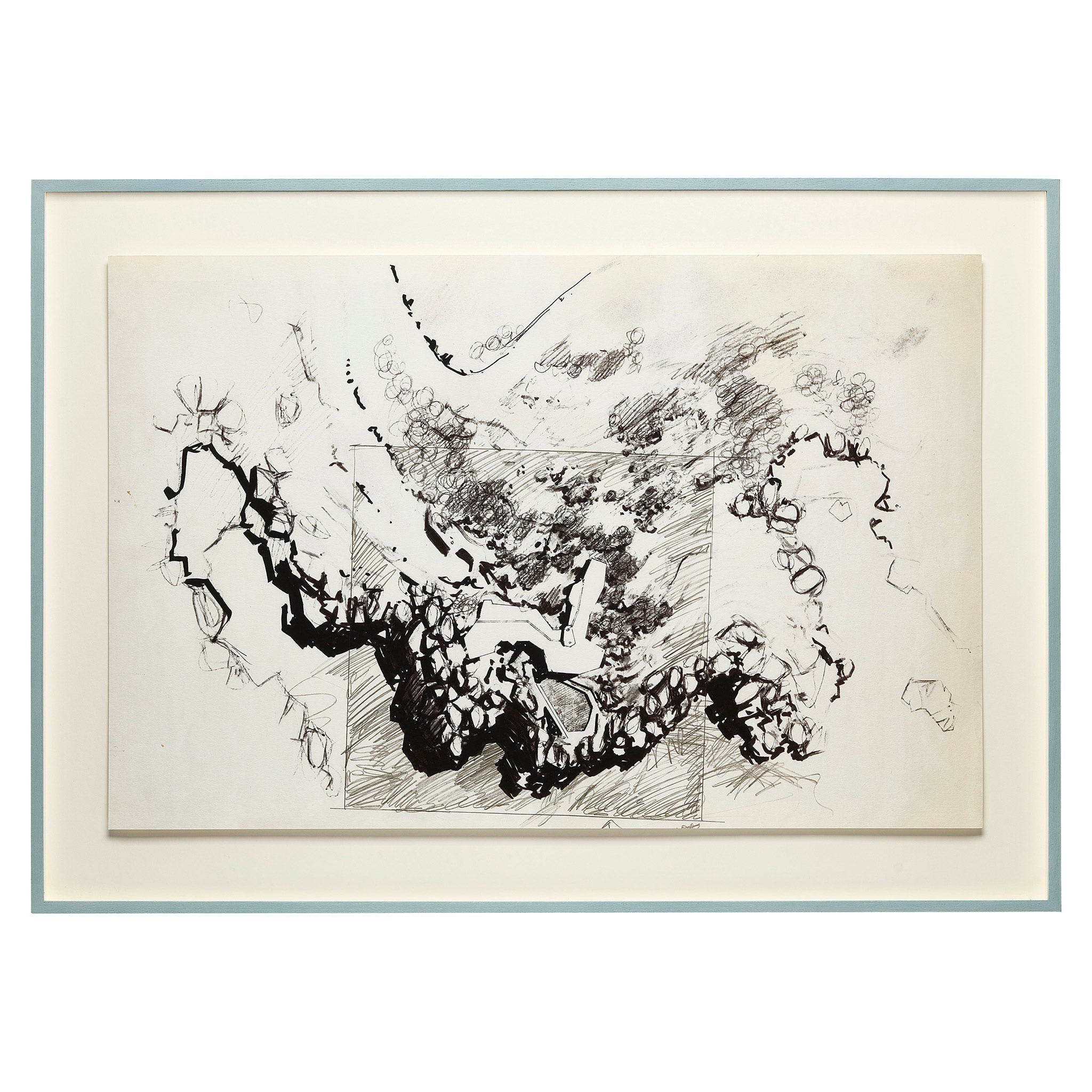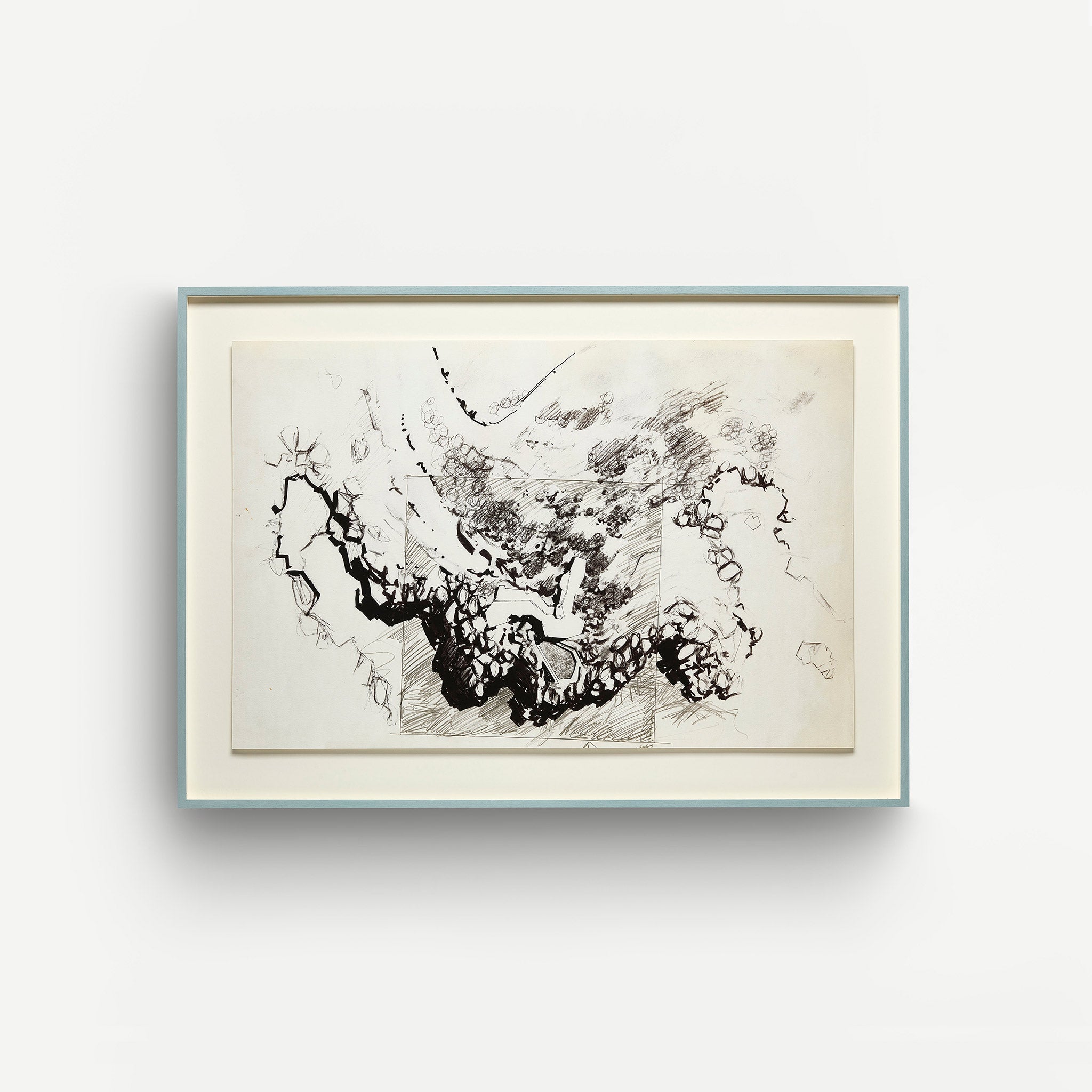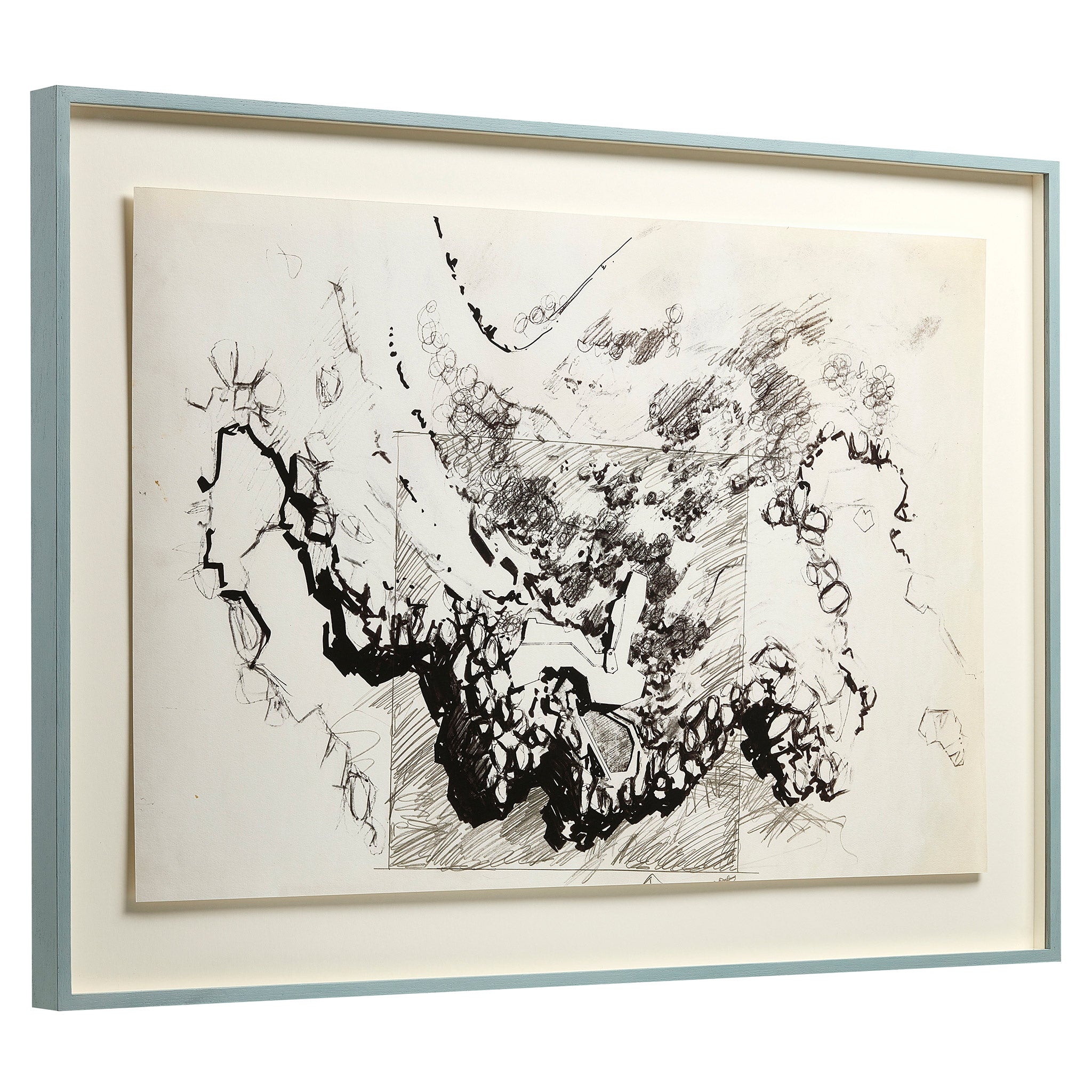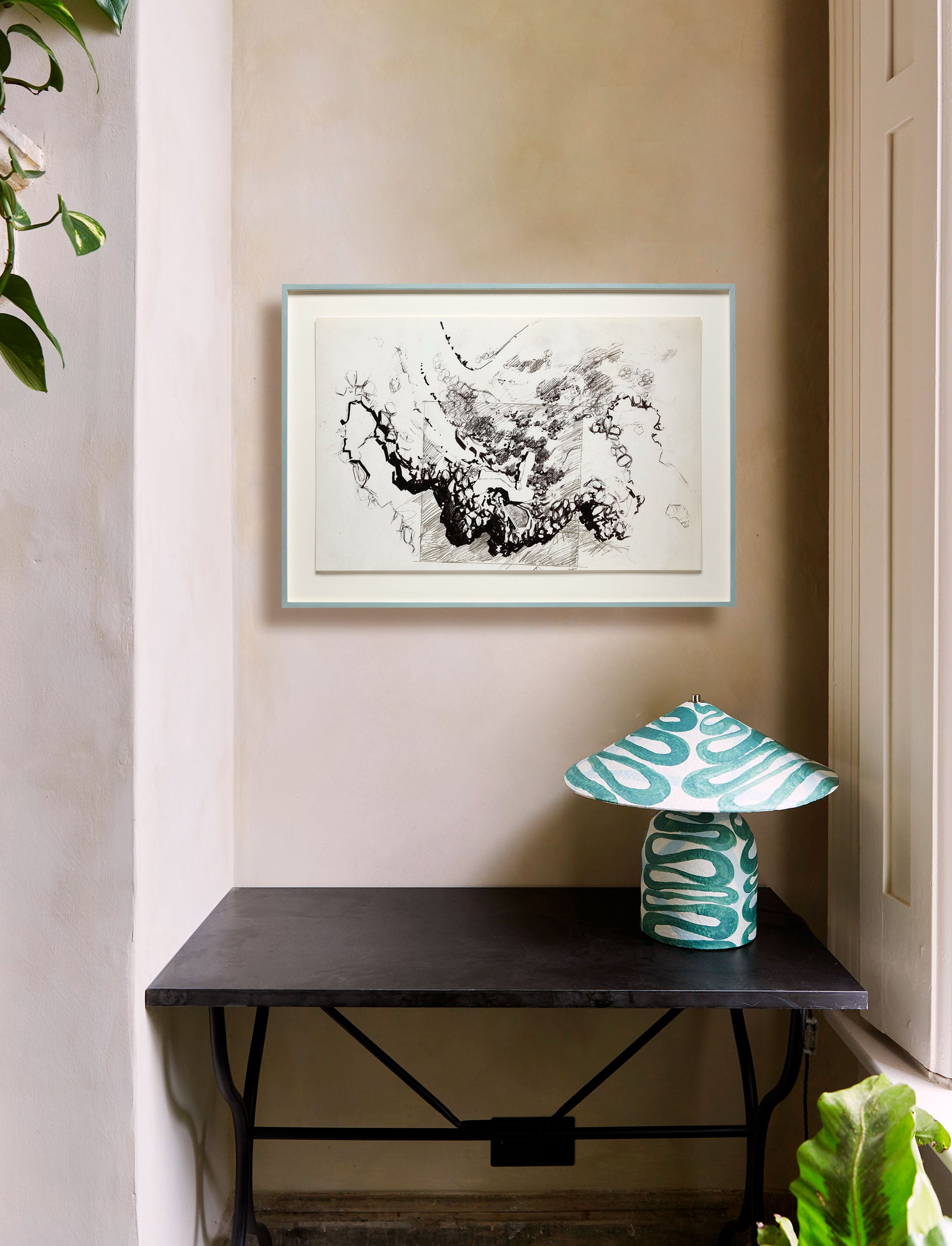Site Plan, Casa Scalesciani
1977
Alberto Ponis was an Italian architect born in 1933. Originally working in London with Erno Goldfinger and Denys Lasdun, Ponis was influenced by the movements of Modernism and Brutalism present in British architecture at the time, and the natural and urban landscapes of London.
In 1964 he started his practice on Sardinia. The Palau area offered an alternative to the wealthy, touristy Costa Smeralda, and the houses he designed seemed to meld with the windswept, remote coastline, themselves becoming a part of the landscape.
This drawing shows a site plan for one of these homes, Casa Scalesciani made in 1977.
“A preliminary sketch I made in 1974 envisioned a single file of small square rooms, as if holding hands to prevent them tumbling into the sea”.
The original was made with pen and ink on tracing paper, an expressive drawing that gives the sense of having been made by someone with a true connection with this landscape.
The original work is held by Drawing Matter, an organisation that explores the role of drawing in architectural thought and practice. We have collaborated with them to bring highlights from their extraordinary collection to a wider audience. Explore Drawing Matter here.
This is a Giclée fine art print on 310gsm Hahnemühle Hemp paper.
Our beautiful frames are handmade in Somerset, using sustainably sourced FSC timber and acid-free, conservation mount board to protect your print.
We've carefully selected some hand-painted and waxed frame finishes to complement this print. For more options, browse our complete collection of colours and finishes, and leave a note at the checkout with your choice.
- Regular price
- Price: £80
- Regular price
-
- Sale price
-
£80
Couldn't load pickup availability
Further information:
Please contact info@tg-prints.com for:
- Bespoke finishes and sizes
- Express and global shipping
- Trade enquiries
Our frames are fitted with an FSC timber sub-frame, providing stability and longevity to the outer frame and glass.
Your frame is designed to be hung using the split batten method (hanging guide here). This enables your frame to sit flush against the wall. If you would prefer the more traditional option of D-rings and picture wire instead, please leave a note for us at the cart when you place the order.












